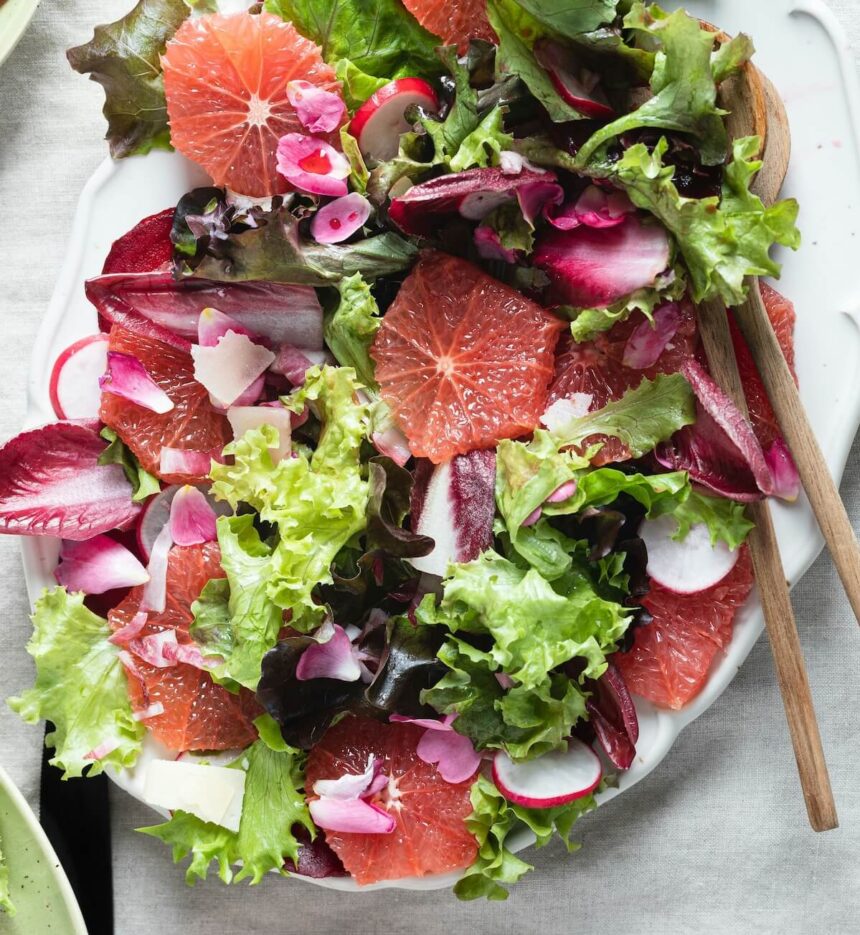You are what you eat. Most of us can agree with that old adage. And even though you don’t want to commit to a diet, you do know that the foods you’re eating could be the reason behind your less-than-ideal health.
So, if you’re ready to improve your food choices without counting calories or becoming best friends with your scale, maybe you should consider the Whole30 Diet.
The Whole30 Diet Isn’t Really a Diet
The word “diet” usually conjures up all sorts of distasteful ideas, like restriction, feeling hungry, counting calories or points, and committing to exercise routines that would make Jillian Michaels proud.
So, it’s a little misleading to call the Whole30 Diet a diet. It’s more like a program or a plan. Sure, you change the foods you eat, but you don’t count anything, and you never go hungry.
Furthermore, the Whole30 plan isn’t a weight loss diet. So, what is it exactly?
The Whole30 Program in a Nutshell
Co-founder and certified sports nutritionist Melissa Hartwig developed this diet as a way to cut out foods that have been known to negatively affect your health.
These four problematic food groups are sugar, grains, dairy, and legumes.
But why should you cut out these food groups?
Many people can tolerate these foods, but they’re not even aware that the foods they’re eating are the reason why they don’t feel great. Sugars, grains, dairy, and legumes can lead to digestive issues, allergic reactions, inflammatory problems, and more.
They can explain your food cravings and why it’s hard for you to lose weight.
So, for 30 days, you round up the usual suspects (sugars, grains, dairy, and legumes), and you cut them out completely.
30 days is thought to be enough time for your body to recover from the negative effects of these foods.
Plus, you get to see – maybe for the first time – how your body feels without these potentially disruptive food groups in your system. You get to decide if these foods are the reason why you’re not able to feel amazing, day in and day out.
How the Whole30 Diet Works?
Legumes (including peanuts) can be difficult to digest, causing bloating and discomfort. Sugar, especially processed and artificial types, can lead to inflammatory conditions, obesity, and diabetes.
Dairy is a common allergen, and grains, whether they contain gluten or not, can be incredibly difficult for your digestive system to handle, not to mention inflammatory for some people.
So, by cutting out sugars, grains, dairy, and legumes, you do three important things.
- First, you remove the potential cause of negative health issues.
- Secondly, you give your body a chance to recover and repair itself.
- Finally, you start to feel more energetic, clear, and level.
Did you notice that we’ve yet to mention weight? That’s because the Whole30 plan aims to help your body and mind, not just your waistline.
Whole 30 Rules: What Can You Eat?
Committing to the Whole30 is more of a lifestyle change than a diet regime. You eat whole foods and whole foods only!
So, if you’re not used to rolling up your sleeves and spending time in the kitchen, it could be a big shift at first. But you’ll find that you’re totally capable of chopping, dicing, and digging in!
Whole 30 Diet Food List:
- Fish is great, and you can even eat canned varieties, as long as the ingredients only read water, oil, and salt. Avoid soy, preservatives, and flavorings.
- Meat in moderation, but nothing that’s prepared with additives, flavorings or processed ingredients. You want meat straight from the butcher’s table, or as close to the original source as possible.
- Poultry in moderation, but avoid all things processed!
- Fruits are okay, but in moderation.
- All vegetables, including high-carbohydrate varieties, like starchy sweet potatoes.
- Nuts and Seeds, but avoid peanuts.
- Fats like olive oil, coconut oil, avocado oil, ghee, and lard are all allowed and encouraged.
That doesn’t sound too bad now, does it?
What Foods Are Not Allowed on the Whole30 Diet?
Now, brace yourself and remember that by taking a break from the following foods, you’re not depriving yourself. Instead, you’re enabling your body and mind to feel amazing in just 30 days.
- No added sugar. So, that includes real sweeteners like honey, maple syrup, and stevia. It also includes artificial sweeteners like Splenda, Equal and all the others. When it comes to sugar, the answer is, “No, no no.”
- No dairy. It doesn’t matter if it’s raw, fresh or fermented. If it’s cow, sheep or goat’s milk, avoid it.
- No grains, so say “Adios!” to oats, wheat, barley, rye, corn, rice, and gluten-free cereals, like quinoa. Be aware that grains sneak into many foods, so read food labels carefully.
- No legumes in the Whole30, and we’re not just talking about beans. That goes for foods like peanuts, chickpeas, lentils, peas, and soy, which is more pervasive than you know!
- No alcohol and tobacco products.
- No sulfites, MSG and carrageenan. These additives show up in processed, jarred and canned foods, and they don’t belong in the Whole30 plan.
Eliminating these food groups can be a drastic lifestyle shift. It also means taking more time to prepare your food, but it may be worth it once you start to notice all the benefits of living without them.
Your Nutritional Needs on the Whole30 Diet
Many people balk at the idea of eliminating entire food groups, like legumes, dairy, and grains, because they believe these groups provide the human body with necessary nutrients.
However, co-creator Melissa Hartwig reminds us that fruits and vegetables contain all the nutrients that grains and legumes provide. What’s more, the nutrients found in fruits and vegetables can actually be more bioavailable.
You might think that if you eliminate dairy, you eliminate healthy sources of calcium, too. But it’s possible for people following the Whole30 to meet their daily calcium requirements. Vegetables like kale, broccoli, and watercress, provide adequate sources of calcium.
Red meats provide many necessary nutrients. They’re an excellent source of B vitamins, protein, amino acids, and minerals, like iron and zinc.
So, while it’s true that you eliminate entire food groups in the Whole30 program, it doesn’t mean you eliminate necessary nutrients, too.
Whole30 Diet Downsides
Even though there have been success stories from people who follow the Whole30 plan, medical professionals aren’t so sure about it. Here’s why:
30 Days Isn’t Long Enough
The principle behind the Whole30 is that by restricting your diet for 30 days, you reset your immune system.
But Dr. Alessio Fasano, the director of the Center for Celiac Research and Treatment at Massachusetts General Hospital, says that “the immune system needs three months to shut off. Thirty days isn’t enough time to turn off systemic inflammation.”
It Could Be Harmful, Depending on Your History
The forbidden foods (sugar, grains, dairy, and legumes) can be problematic for many people, but if you cut them out all at once, it’s hard to know which food is causing you trouble.
What’s more, according to Dr. Gerard Mullin, director of John Hopkins’ Celiac Disease Clinic, removing grains and legumes could alter the microbiome and gut flora, which can negatively impact your digestive system.
Finally, if you have preexisting health conditions and, therefore, nutrient deficiencies, this plan can worsen rather than improve your condition.
Not Enough Guidelines for Re-Introducing Sugar, Grains, Dairy, and Legumes
Unlike the Atkins Diet, which has four phases in which you have a structured approach to introducing different food groups, the Whole30 Program only offers a 10-day reintroduction plan to follow the Whole30 plan.
So, after those 10 days, it may be difficult to know how to proceed.
Additionally, your body has just spent 30 days not having to digest and metabolize some major food groups. By drastically adding them back into your diet, you can stress your body and see many negative reactions.
Whole30 Diet Health Benefits
Weight Loss
Now, weight loss isn’t the goal, but it can often be the happy result of the Whole30 program. According to co-founder, Melissa Hartwig, 96 percent of participants lose weight unintentionally.
But this seems reasonable, doesn’t it? If you cut out sugars and all the processed goodies they come in, you’re already on your way to eliminating extra fat stores.
Body Awareness and How Food Effects You
Before you start this diet, you probably just eat what you like and feel the way you feel. And some days, you may wake up and feel great. But other days, you wake up without any energy or focus, and it feels like a proper hangover.
The Whole30 plan aims to help you reconnect with your body and become aware of how it feels based on what you’re eating. The food groups you eliminate are associated with hormonal imbalances and can disrupt your gut.
Once you start removing these foods, you begin to notice positive changes in sleep patterns, energy levels, and digestive functions.
Enter into Ketosis
Similar to the Ketogenic Diet and the Atkins Diet, the Whole30 can kick-start your body’s metabolism. Instead of burning glucose for energy, you can start to burn off fat stores for energy.
For some people, this can drastically improve their weight loss efforts as well as balance insulin production.
Consistent Mood and Energy Levels
When you eliminate sugars (except for those found in fruits and vegetables), you help to stabilize your blood sugar. This means less emotional eating, fewer (if any) sugar crashes, better moods, emotional stability and feeling more energized and optimistic.
All in all, the Whole30 is a short-term approach to feeling better without having to diet.
By eating whole foods that support the entire body, you can repair your body and reset your immune system, and then watch as a wide range of benefits unfold.
As always, check with your primary care provider to decide if this month-long program can help you obtain greater health and wellness.








